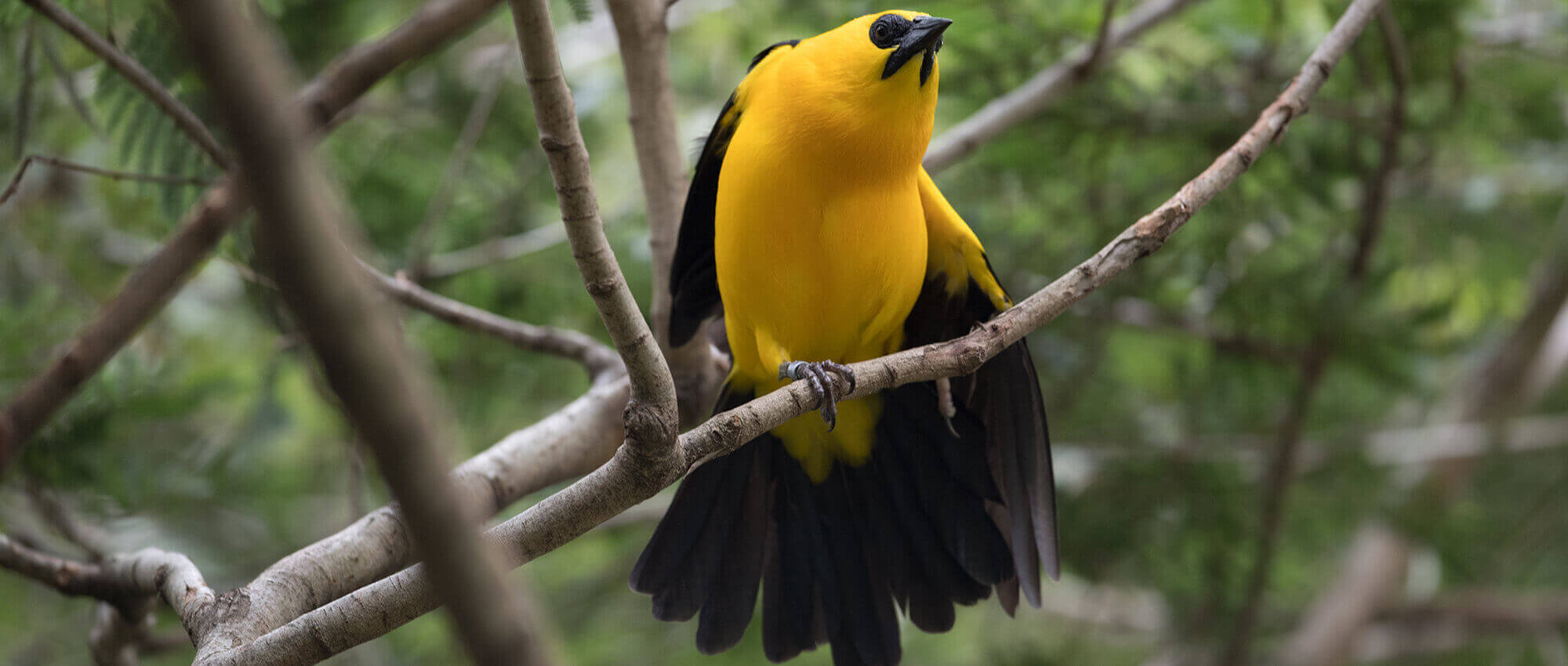
Oriole Blackbird is found near water sources
TURpial lagunero, TURPIAL MAICERO
Gymnomystax mexicanus
The Oriole Blackbird is a distinctive, large, bright icterid. Contrary to the meaning of its Latin epitope, the Oriole Blackbird does not occur in Mexico. This oriole has a bright saffron-yellow head, underparts, and lesser secondary coverts; with a black back, wings, tail, malar, and bare skin around the eye. The head, neck, shoulders and underparts are bright yellow; the rump and tail are black, apart from the lower wing-coverts that show a stripe of yellow. The eye is brown and is surrounded by a black eye ring; its large bill and feet are blackish. The male weighs 93.5 and the female 92 g. Both sexes are similar in appearance. While on an elevated and prominent position, tree branch or top of a bush this oriole emits a loud song that sounds like a rusty hinge. It inhabits humid, muddy areas near rivers, lakes, marshes, islands in rivers and grassy open lands. The oriole blackbird is usually seen in pairs or small groups but does not form mixed species flocks. It feeds on invertebrates such as insects, caterpillars, frogs, fruit, and tender maize grains from cobs. The nest is a cup-shaped structure of about 17 cm (7 in) in diameter, loosely woven out of dry grass, rootlets and stems. The clutch is of 1 or 3 pale blue eggs with brownish and grayish spots. The female incubates the eggs for 18 days. Both parents feed the chicks.
El Turpial Lagunero contrario a su nombre, no se le encuentra en Méjico. Algo similar a un Icterus particularmente cuando vuela. Es de tamaño grande, no presenta babero y tiene diferentes hábitos. Su iris es café y el círculo alrededor del ojo del color negro . De pico negruzco, robusto y agudo. El plumaje de la nuca, cabeza, hombros parte inferior es de un hermoso amarillo dorado pero su espalda, alas y cola son de color negro. Tiene su malar, bridas y región ocular también negras. Se la puede observar a orillas de lugares húmedos tales como orillas de rios, lodasales, pantanos, lagos y en bordes de bosques y pastizales. Percha en arboles u otras perchas elevadas. Es generalmente conspicuo y solitario. Se mantiene en parejas o en pequeñas bandadas. El macho pesa 93.5 g y la hembra 92 g. Ambos sexos son similar. Se alimenta de invertebrados, fruta, ranas y consume granos de maiz tierno. Construye nido en forma de taza de aproximately 17 cm of diameter en arboles y arbustos a una altura menor de 6 m. La hembra pone 1-3 huevos azul pálido con manchas color café y negro en un extremo y los incuba por 18 dias. Ambos alimentan los polluelos.
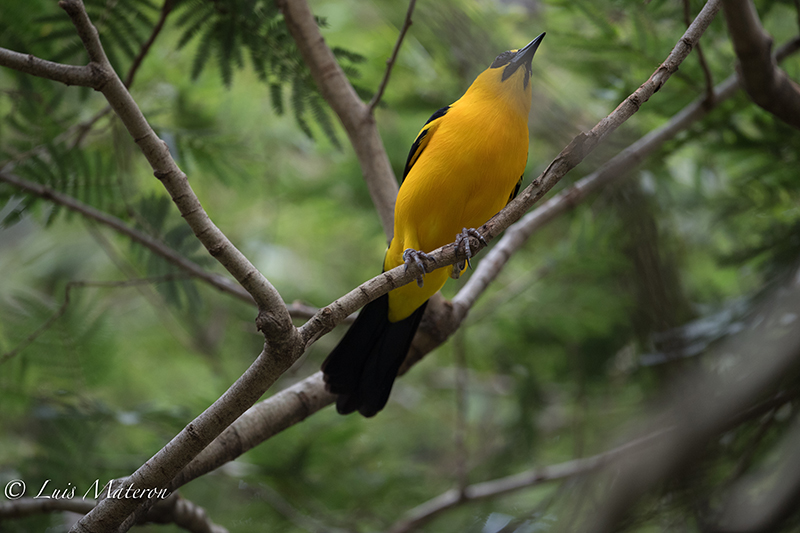
LAM_3805

LAM_3810
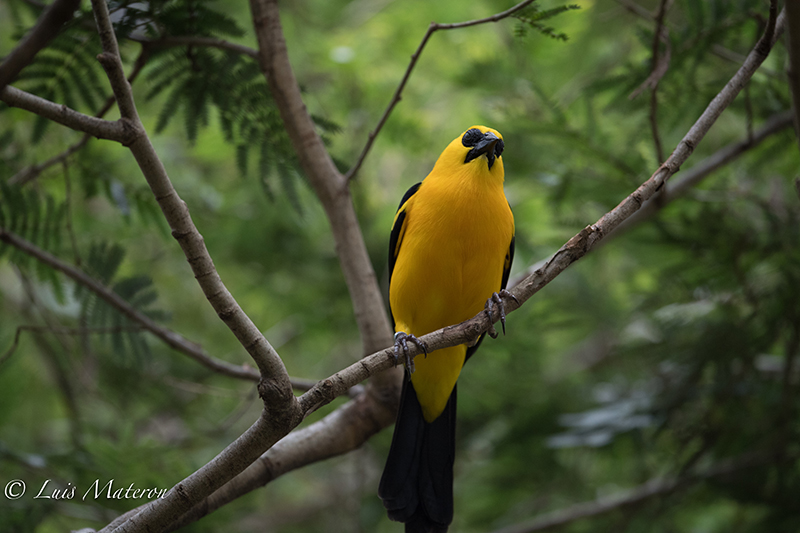
LAM_3809

LAM_3718
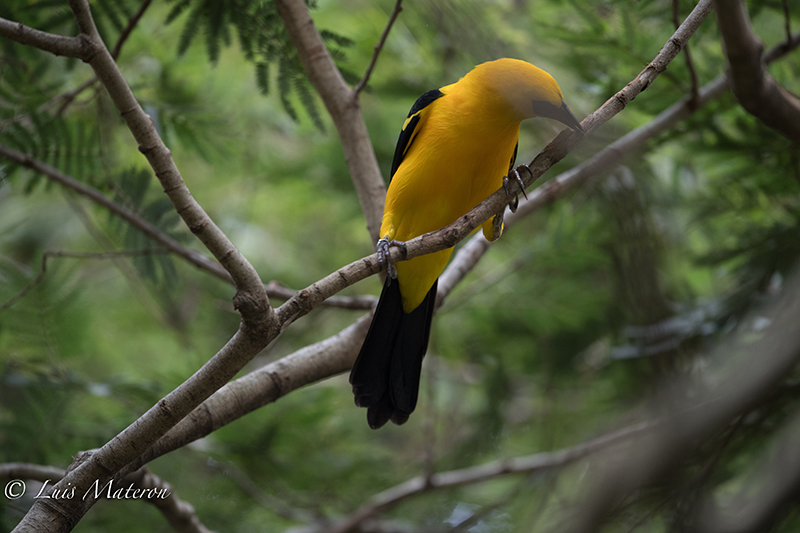
LAM_3808

LAM_3823
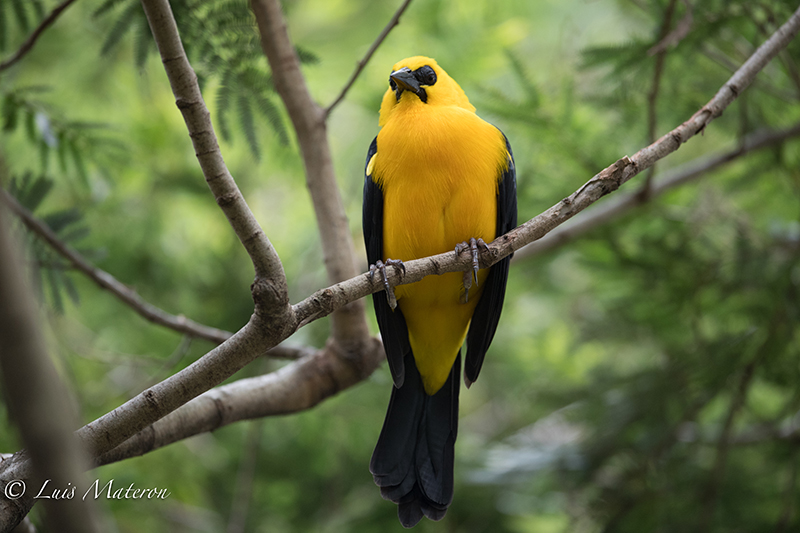
LAM_3826
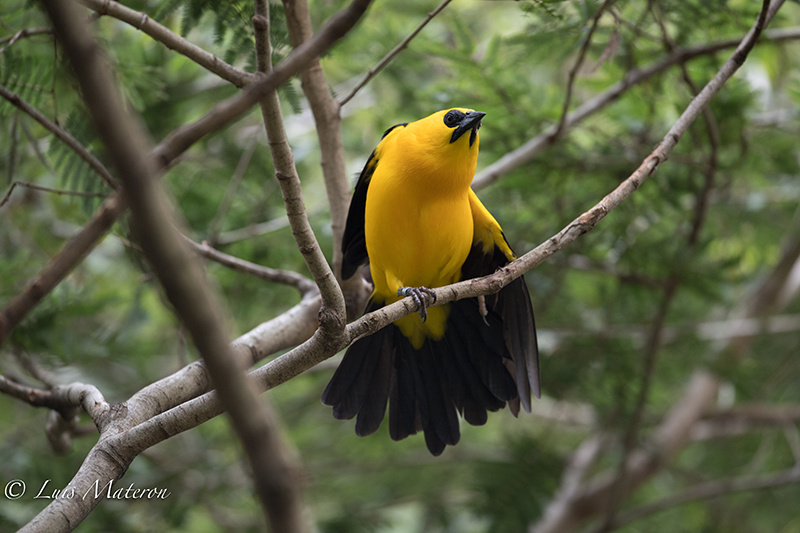
LAM_3832
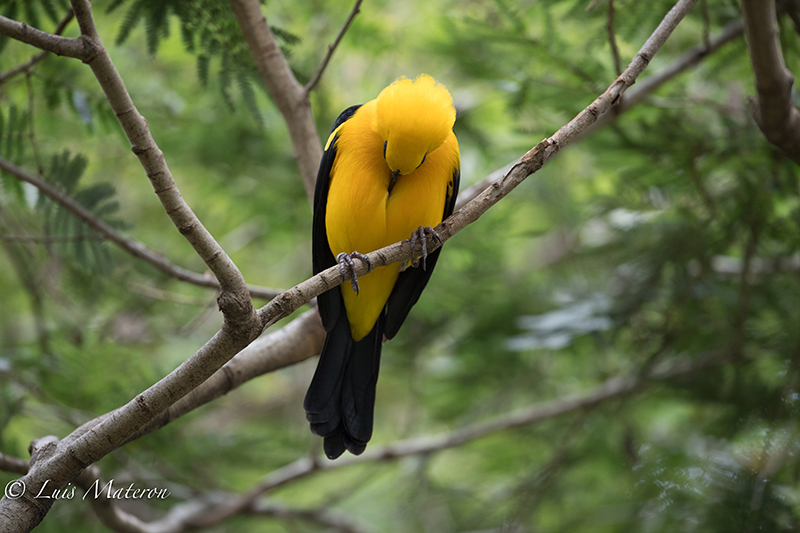
LAM_3818

LAM_3813
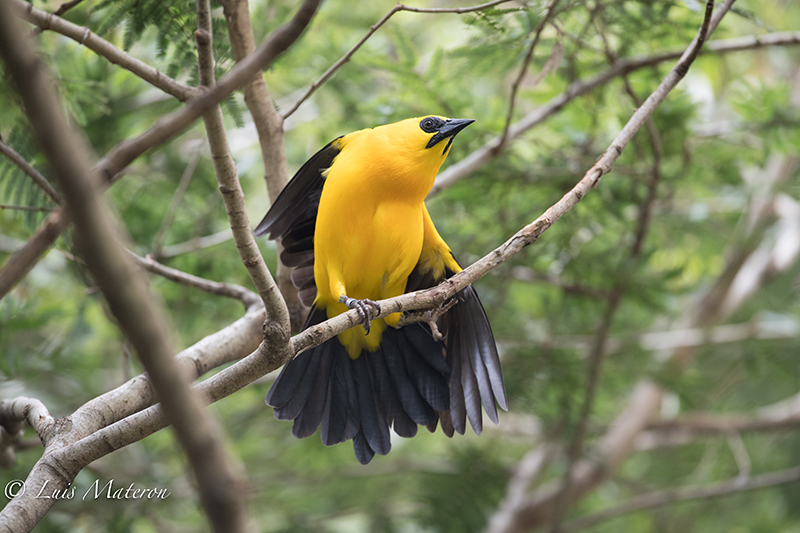
LAM_3825

LAM_4390
